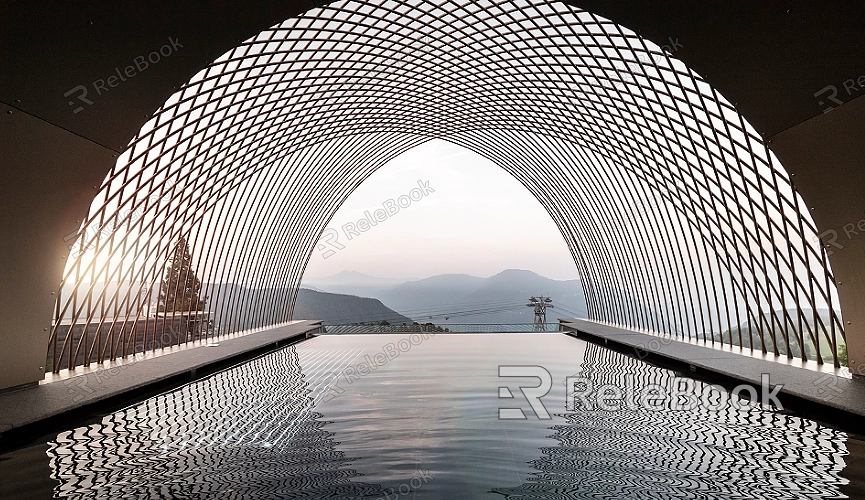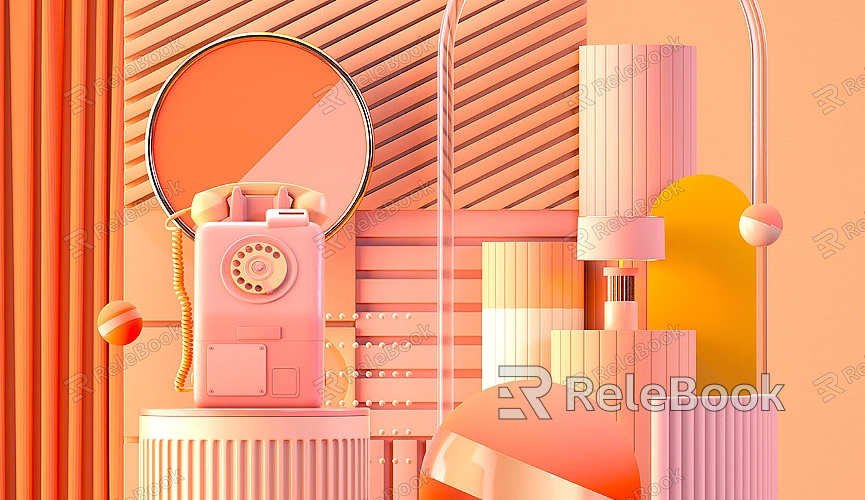How to Add Textures to 3D Models
Adding textures to 3D models is an essential step in the process of modeling and rendering, significantly enhancing the realism and visual appeal of your work. Whether you're creating game characters, architectural designs, or product displays, the right textures can add rich detail to your projects. Popular 3D software tools like Blender, 3ds Max, and Maya each have their own methods and functionalities for texture application. This article will explore the process of adding textures to 3D models, equipping designers with effective techniques for their projects.

1. Preparation
Before you begin, ensure you have suitable texture resources at hand. If you’re unsure where to find high-quality textures, consider visiting specialized websites like Relebook, which offers a variety of texture materials suited for different styles of 3D models. Common texture types include wood, metal, stone, and fabric, each providing a unique visual layer to your models.
2. Choose the Right 3D Software
Different 3D software packages provide various tools and options for texture application. Familiarity with the software's features is crucial. For example, in Blender, users can leverage the node editor to manipulate texture properties, while in 3ds Max, the material editor offers intuitive texture management. Selecting a software package that you are comfortable with and that meets your project needs can enhance your workflow efficiency.
3. Import the Model
Before adding textures, you need to import your 3D model. In most 3D software, you can do this by navigating to the "File" menu and selecting the "Import" option to bring in your model file. Ensure that your model is properly formatted before import; common formats include FBX and OBJ. Check the model’s scale and coordinates to confirm it displays correctly in your workspace.
4. Apply Basic Textures
Select the Model: Click on the model you want to texture in your workspace to ensure it is active.
Access Texture Options: Locate the texture settings within the software’s material or texture editor.
Upload Textures: If you have custom texture files, use the "Import" or "Upload" option to add them to your software. Make sure the resolution of the texture is appropriate for your model to ensure a good visual outcome.
Apply the Texture: After selecting the suitable texture, drag it onto the model's surface or set it up in the material properties.

5. Adjust the Textures
Once the texture is added, you may need to make adjustments to ensure it displays well on the model. Consider the following methods:
Scaling: Modify the size of the texture to fit specific parts of the model.
Rotating: Adjust the texture’s orientation to achieve the desired look.
Tiling: Change the tiling settings to ensure a seamless transition across larger surfaces.
6. Utilize Advanced Texture Options
Many 3D software applications support advanced features like normal maps, reflection maps, and transparency maps. These options can further enhance the realism of your models. For instance, normal maps can simulate detailed surface texture, while reflection maps can add sheen to surfaces. Choose the right advanced options based on your project requirements to create more dimensional models.
7. Save and Export
After adding and adjusting your textures, don’t forget to save your project. In most software, you can do this by selecting "File" > "Save" to keep your project file. Additionally, you can use the "Export" function to output your model in different formats for use in other applications.
8. Practical Application
Once your textures are applied, you can import your model into other software for further processing, such as using Unity or Unreal Engine for game development. These platforms allow you to utilize more complex lighting and material settings to enhance your visual output.
Mastering the technique of adding textures to 3D models enables designers to navigate their projects with ease. Whether aiming to enhance the aesthetic quality of their work or improve visual performance, effective texture application is an indispensable part of the process.
If you’re searching for high-quality 3D texture resources or need SketchUp models and 3ds Max models to support your creative endeavors, Relebook offers a wide range of options to help you achieve outstanding visual results in your projects. We hope this article provides valuable insights and assistance for your design work.

